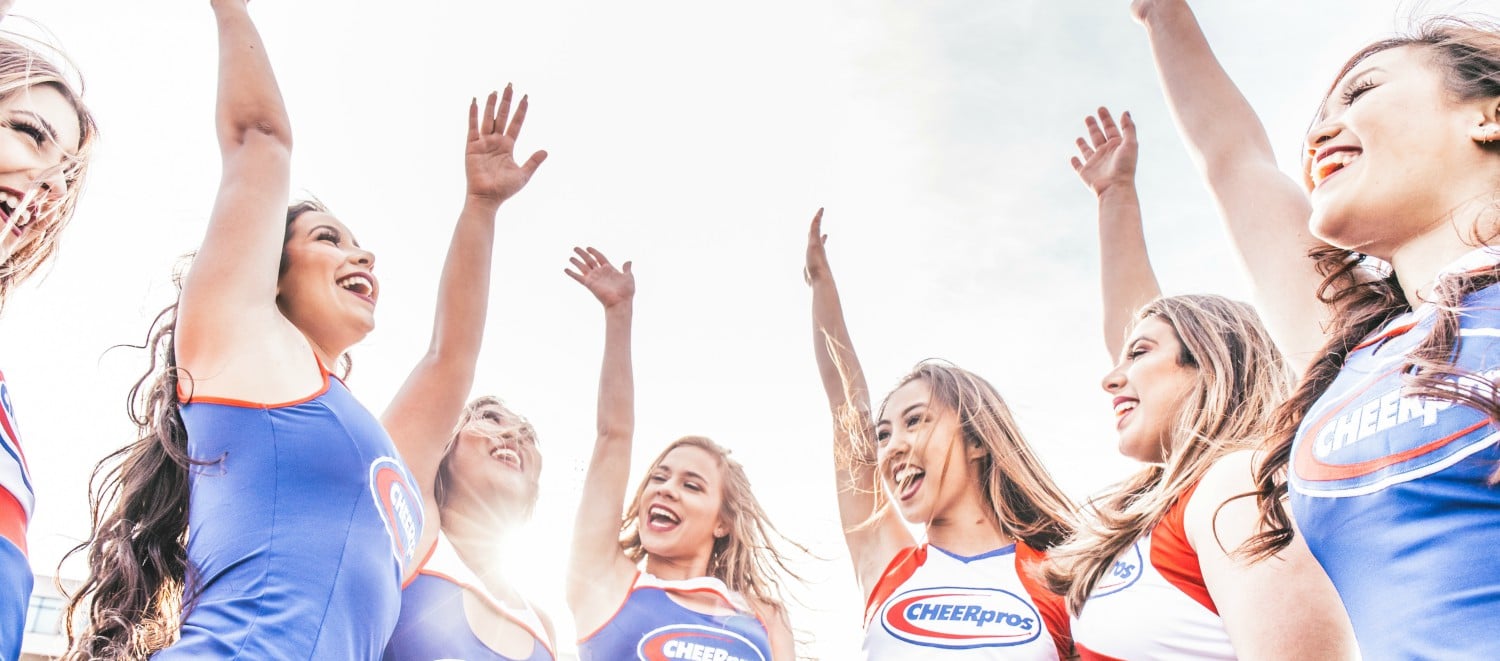
The most important elements of a great cheerleading team are probably hard work, passion, and creativity—but a solid soundtrack never hurts. When you’re choosing music for your next cheer routine, there are several small missteps that could be holding your team back from giving the performance of a lifetime. Check out these common musical blunders to see if you might need to get your team back on the right beat:
1. Choosing a song because you like it
As a coach, you’ll want to avoid selecting songs that you like without considering the team’s preferred music. You may love ‘80s glam rock or disco, but if you’re coaching 8-year-olds, there’s a good chance they won’t be able to relate to older genres of music. If you play your favorite music for them and they seem to genuinely enjoy it, then great, but the priority should be choosing music that’s going to pump up the team.
2. Searching for songs to fit a specific theme
Although it can sometimes work when you start with a theme and find the perfect music to fit, it is usually much easier to select the music first. Try finding at least two songs that you absolutely love and can form into a theme, rather than starting with a set-in-stone theme. It can be frustrating to search for the perfect thematic songs only to find there is not enough good content for a full 2:30 mix.
3. Picking songs that are too fast
Some songs sound great on the radio but are all wrong when remixed for cheer music. Cheer competition music should be between 135-150 BPM, with the average mix falling at about 145 BPM. Some popular songs that are great to dance to are actually too fast for stunting, which cannot be properly executed at high speeds, even by elite teams.
For example, “Let’s Go Crazy” by Prince is recorded at a BPM in the 170s but sounds ridiculously slow if you speed it down to a suitable 150 BPM for a cheer performance. Although you can do a dance section to faster songs, you’ll need to choreograph so the movement fits the pace of the music.
4. Selecting songs that are too slow
Songs can also be too slow for a cheer performance. A lot of rap and R&B music is recorded in the 80-100 BPM range—so when you speed it up to around 140 BPM, the words get jumbled together, and it just sounds like a mistake. There are cases when rap and R&B can translate well to a higher BPM. If the song is between 70-80 BPM, it can be double-counted and treated like it was recorded at 140-160 BPM. If you search for the BPM of a specific song, you should be able to get an idea of whether it will work. If you are not speeding up the track too much, it should sound good in a cheer mix.
5. Picking music before considering the flow of your routine
In general, the highest-energy songs belong in the opening, tumbling, jumps, and dance sections of a routine—these are the spots where you want the hardest-hitting and highest-energy songs.
As you select your music, consider the flow of your routine and whether the songs have high energy levels when you need them most. You may also want to consider placing thematic lyrics and music in line with climactic stunts. Partner stunts, baskets, and pyramids can pair well with dramatic, theatrical ballad vibes. Your music does not need to slam the gas pedal the whole time, but the performance will feel more pulled together and impressive if you take a moment to consider the overall effect you’re going for and select the music accordingly.
If you’re still struggling to place your finger on what’s wrong with your performance music, check out our selection of cheer mixes to see if you can find the perfect soundtrack for your next routine.



Comments